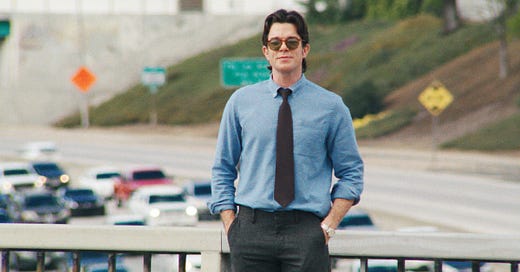For all the talk of the “Golden Age of Television” that we seem to be currently coasting on the dying fumes of, for all the Don Drapers and Saul Goodmans, it always felt like something was missing. Shows like The Wire and Mad Men were so good that it started to feel like television was trying to get too polished and perfect to keep up. Weirdness and spontaneity became an afterthought, everything started to look spotless.
There have been a few exceptions, almost entirely in the talk show format. Chris Gethard took his love of early David Letterman and turned it into a wildly fun and energetic punk funhouse with his sorely overlooked eponymously titled show that lasted three seasons, while Desus & Mero made so many good jokes-per-second that you had to start writing them down to remember which ones to talk about the next day. But for the most part, the only television I’ve continuously watched over the last few years waiting to see what would happen or what the hosts would say has been Inside the NBA, and now that might be going away. There have been plenty of good, sometimes great funny television shows over the years, but most of it is scripted. Things have to go as planned in our data-driven world, I assume the streaming bosses all say. There isn’t room for something like what Dick Cavett in the 1960s and ‘70s or David Letterman in the ‘80s, and if you want to find something chaotic and ahead of its time like Glenn O’Brien’s public access punk extravaganza TV Party, you’re very out of luck.
Unless John Mulaney Presents: Everybody's in LA is the future. Then there’s a chance we could have weird TV again. The six-episode live show felt like an experiment for Netflix, and had more than a few critics asking what the point of the whole thing was. But when it comes to critics and comedy, I tend to find myself liking things more whenever I read a take trying to make sense of something. Critics not getting comedy is a tale as old as time, so it’s always better to check it out yourself and see what the work does for you.
For me, Everybody's in LA had me thinking back to all the aforementioned talk shows of yesteryear; the quirk and snark of vintage Letterman and the conversational tone of Cavett, and the fact that I watched the episodes after they went live while hanging out with my baby at 2 in the morning made me feel like I had company. Part of that was the fact that the show had been taped live, but also because Mulaney taking calls from L.A. residents lent a late-night radio talk show feel to the whole thing, making it like Coast to Coast AM balanced with the silliness of Space Ghost Coast to Coast. The guests also didn’t seem to have much clue what to make of those whole thing, which made it all the more wonderful in this age of fine-tuning every damn thing celebrities say. Jerry Seinfeld was cranky in the first episode and seemed like he felt as if he had better things to do, while a hoarse Sarah Silverman sitting alongside Cassandra Peterson who made a rare appearance not in her Elvira persona, was gloriously confusing and fun. And Richard Kind as the host? Come on. You know I like that.
But there was something very not weird about the experience of watching Everybody's in LA. Seeing people just sitting around (as well as a few sketches including a Gil Faizon and George St. Geegland cameo) was refreshing. I stretched out all six episodes, almost as I did another show on Netflix, Midnight Diner. The two shows have almost nothing in common—Midnight Diner is a scripted show from Japan, and it’s more moody and contemplative, hardly a comedy—but you do see people together in as normal a way as can be presented on your television. On Mulaney, it’s the free-for-all feel of the conversations and phone calls, while Midnight Diner is just people sitting around a diner that is only open at night and serves whatever the chef has. Both shows felt like they were out of a bygone era, from long before we went from the declaration of the Covid epidemic to an epidemic of loneliness in the span of a few short years. Mulaney does the show out of a modern studio, but he looks at a clipboard while delivering his monologue and takes calls from a landline phone. The only real technology is the use of the L.A. delivery robot Saymo as sort of a sidekick. Instead of laughing at jokes like Ed McMahon or Andy Richter, the robot delivers ginger ale to the guests. It’s just the right amount of quirky and, probably, paid product placement. The robot on wheels actually adds to the whole thing. And Mulaney as a host is wonderful. Some people have said he’s struggled to find creative footing since going public with his drug and alcohol addiction, but he feels awkwardly at home as the host of a wonderful awkward show that doesn’t totally seem to have direction. Whether or not we’ll get more Everybody's in LA I’m not sure, but hopefully, it’s a sign of things to come for the host and also whatever streaming might try to do as it experiments with live television. We need weird stuff. It reminds us we’re human.





I concur with the writer. It's nostalgic and is void of horror, tragedy, drama,
Politics, stupidity and divisiveness. It's very informative, fun .
Some people have forgotten what can be or IS funny. People need to lighten up and get out of themselves. I'd love to have it back. Ingenious program.
I want MORE!!!!
OK, you've convinced me. I'll give it a watch.